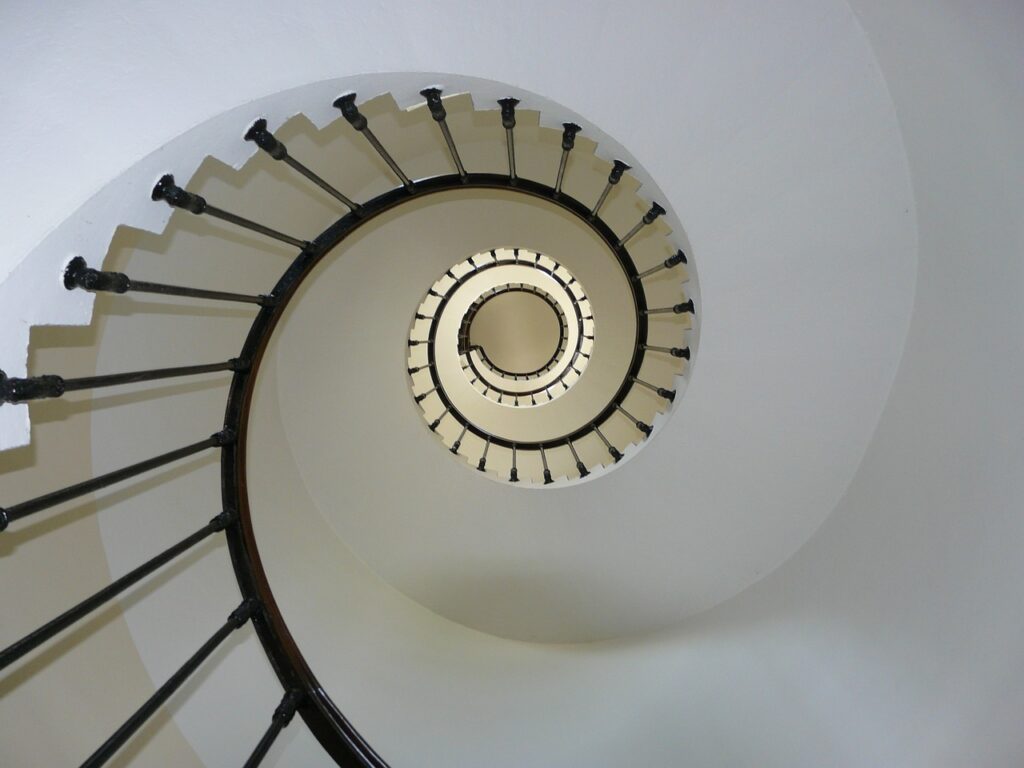Your cart is currently empty!
Blog

Perception: The Love of Success Or The Cry Of Failures ?

Perception:
1. Everest is a hill !!!
2.My mother is the most beautiful woman of this world !!!
Introduction:
Perception is often described as the lens through which we view the world. Yet, it’s more than just seeing, hearing, or touching; it is the interpretation of all that we sense. Our brains don’t just record reality like a camera; they construct reality based on experiences, emotions, and internal biases.
This article explores how perception influences our understanding of surroundings and impacts our behavior — often without us even realizing it.
What is Perception?
Perception is the cognitive process by which individuals organize and interpret their sensory impressions to give meaning to their environment. It bridges the external world with our internal reality.
There are three main components of perception:
• Sensation: The raw data from the environment, captured by our senses.
• Attention: Choosing which sensations to focus on.
• Interpretation: Assigning meaning based on past experiences, emotions, and expectations.
Perception is not purely objective. Two people can witness the same event and interpret it differently, depending on their personal filters.
How Perception Shapes Understanding ?
1. Perceptual Filters
Every human has perceptual filters developed through upbringing, culture, education, and experiences. These filters determine what we pay attention to and what we ignore.
For example:
• A city dweller may ignore the sounds of traffic, while a tourist finds them overwhelming.
• A parent might immediately notice subtle signs of a child’s sadness, whereas a stranger wouldn’t.
Thus, understanding is never pure; it is tinted by these perceptual filters.
2. The Role of Expectations
What we expect to see often determines what we do see.
This phenomenon, called perceptual set, means that our expectations create a readiness to perceive stimuli in a particular way.
In experiments, participants shown blurry images interpreted them based on what they were told the images were. Expectations literally shaped their understanding.
In real life:
• If we expect people to be rude, we may interpret even neutral actions as offensive.
• If we expect to find opportunities, we are more likely to notice them.
3. Influence of Emotions
Our current emotional state plays a huge role in perception:
• Anxiety can make us perceive threats everywhere.
• Happiness can make challenges seem like opportunities.
In other words, we don’t just perceive the world — we perceive it through our emotions.
Perception’s Impact on Behavior
Perception doesn’t stop at shaping understanding; it goes further to mold behavior.
1. Decision Making
Our perceptions guide our decisions. If we perceive a situation as dangerous, we act defensively. If we perceive it as an opportunity, we move forward boldly.
Importantly, it’s not the actual reality, but our perceived reality that drives behavior.
For instance:
• A job candidate who perceives an interviewer as hostile may perform poorly.
• A student who perceives a subject as difficult may give up sooner.
2. Interpersonal Relationships
Misunderstandings often arise not from facts, but from differences in perception.
One person may perceive a friend’s silence as anger; another may perceive it as thoughtful reflection.
Effective communication depends heavily on understanding that our perceptions are subjective — and so are others’.
3. Self-Perception
How we view ourselves — our talents, worth, potential — influences our behavior enormously.
• People who perceive themselves as capable are more persistent.
• Those who perceive themselves as unlucky or unworthy may not even try.
Thus, self-perception becomes a self-fulfilling prophecy.
Real-World Examples:
Optical Illusions
Optical illusions show vividly how perception can deceive. Two lines of the same length can appear different based purely on surrounding context.
This demonstrates that what we “see” is not always what is.
Cultural Differences
Cultural backgrounds shape perception.
In some cultures, direct eye contact signifies confidence; in others, it can be seen as disrespectful.
This shows that our cultural ‘training’ affects how we interpret basic behaviors.
Media Influence
Media narratives can skew perception dramatically.
A constant feed of negative news can make the world seem far more dangerous than statistics show.
Thus, what we consume affects how we perceive — and subsequently behave.
Can We Control Our Perceptions?
Complete control over perception is not possible. However, being aware of its role can help us:
• Practice Mindfulness:
Observing our reactions without judgment allows us to notice how our mind is interpreting a situation, giving us a chance to adjust.
• Seek Multiple Perspectives:
Actively considering different viewpoints helps widen our perceptual lens.
• Challenge Assumptions:
Asking, “Is this really true?” about our initial impressions can prevent snap judgments.
• Emotional Regulation:
Managing our emotions helps prevent emotional biases from clouding perception.
The Future of Perception
In the age of AI, augmented reality, and social media, the boundaries between ‘reality’ and ‘perceived reality’ are becoming even blurrier.
Algorithms tailor our information feed, reinforcing our existing beliefs.
Virtual and augmented realities offer experiences that feel real — even when they are simulations.
Thus, developing perceptual flexibility and critical awareness is becoming an essential life skill.
Conclusion
Perception is not just a passive recording of the world; it is an active construction of it.
Our surroundings,relationships, decisions, and self-image are all deeply shaped by how we perceive.
By understanding the forces behind perception, we can move closer to seeing the world — and ourselves — more clearly, and behave with greater intentionality and wisdom.
Every thing is useful, unless we understand what is useless?

The thing that I as a human being is unable to use is a waste.
In the natural world, there is no concept of waste. Everything has a place, a role, and a function. Leaves fall to the ground and decompose into rich soil. Animal droppings become fertilizer. Even the death of a living being becomes food for another. Nature operates in cycles, where every byproduct is a raw material for something else.
It is only in the human world that we find the term waste. But what really is waste? Is it something inherently useless — or is it something we don’t know how to use?
Waste: A Human Invention
Take a moment and look around. The plastic bottle, the broken furniture, the rusted metal sheet, the old mobile phone — all labeled as “waste.” But what makes them waste? Simply this: they no longer serve our immediate purpose. Yet each of these items contains material, energy, and potential.
We call things waste not because they are truly useless, but because we lack the knowledge, creativity, or will to repurpose them.
Nature’s Wisdom:
Nature doesn’t throw anything away. A fallen tree becomes home to insects and fungi. A dying animal feeds scavengers. Water evaporates, condenses, and returns as rain. This beautiful system thrives without a landfill, without pollution, without the word “garbage.”
Contrast that with the way we treat resources. We extract, use, discard — and pile up what we don’t need. Instead of asking “What can this become?”, we say “Throw it away.”
A Matter of Perspective:
Consider this: driftwood. A broken, weathered piece of tree, tossed by the sea — by most definitions, a waste product. Yet in the hands of an artist or a craftsman, it becomes a sculpture, a lamp, a centerpiece.
The same goes for scrap metal, discarded cloth, old electronics — all of which can be reborn into art, tools, or innovations with a shift in perspective.
So the question is not what is waste?
The real question is what can we imagine it becoming?
Towards a Regenerative Mindset:
To move beyond the idea of waste, we must move toward a regenerative way of thinking — one that sees resources in every form and potential in every object. This isn’t just about recycling, but about redesigning our relationship with materials and systems.
Can we build furniture from fallen branches?
Can we design products that return to the earth harmlessly?
Can we value repair over replacement, and creativity over convenience?
The Power of Human Intent:
Waste is not a physical reality — it’s a mental one. When we can’t use something, we label it waste. But with enough intent, ingenuity, and respect for the interconnectedness of life, we can turn almost anything into something of value.
Because truly, nothing is waste.
“Weakness is the Cradle of Strength”:
The birth of strength lies deep into the darkness beneath the joyful surface where lies no ease and please!!!
Weakness is the Cradle of Strength
We often live under the illusion that strength is about power, perfection, and unshakable confidence. From social media to corporate boardrooms, the message seems clear: be strong, be successful, and never show weakness. But if we look closely at the stories of real growth, resilience, and transformation, we’ll find a deeper truth—weakness is not a failure. It is the beginning of strength.
This idea may seem counterintuitive at first. After all, when we think of weakness, we often associate it with vulnerability, failure, or inadequacy. But in reality, weakness is not the enemy of strength—it is its birthplace. Every strong person was once weak. Every success was once preceded by struggle. And every moment of personal triumph began with a moment of doubt or defeat.
Let’s explore how weakness, far from being a flaw, is actually the fertile ground where true strength is cultivated.
1. Understanding Weakness
Weakness can take many forms—physical, emotional, mental, or even spiritual. It could be fear, insecurity, lack of knowledge, or failure. Whatever its shape, weakness is simply an acknowledgment of limitation. It’s the awareness that we are not perfect, that we fall short, and that we have areas where we need to grow.
In a culture that demands constant excellence, weakness is often seen as something to hide. But suppression only delays growth. Acknowledging weakness is the first step toward overcoming it. It’s an invitation to improve, to evolve, and to become more than we are today.
2. Why Weakness is a Catalyst for Growth
One of the most profound truths in life is this: we grow not despite our weaknesses, but because of them. When everything is easy, there is little incentive to change or improve. But when we encounter struggle—when we hit rock bottom, face rejection, or confront our fears—we are pushed out of our comfort zones. That discomfort becomes the fuel for transformation.
Think of a muscle. It must be stretched and stressed to become stronger. The same applies to our character. Every time we face a weakness head-on, we are forced to dig deeper, work harder, and reach higher. In that process, strength is born—not just physical or intellectual strength, but emotional resilience, inner peace, and wisdom.
3. The Role of Failure and Setbacks
Some of the most successful people in the world—entrepreneurs, artists, athletes—often talk about their failures as turning points in their lives. They speak of moments when they hit rock bottom, made the wrong decision, or faced public defeat. But those very moments became the crucibles in which their greatness was forged.
Take Thomas Edison, who famously said, “I have not failed. I’ve just found 10,000 ways that won’t work.” His “failures” were not the end of the road—they were stepping stones toward a greater invention.
Failure teaches us humility. It teaches us what doesn’t work. More importantly, it teaches us how to persevere, adapt, and improve. Each setback becomes a lesson, each flaw an opportunity. That is how weakness leads to strength.
4. Embracing Vulnerability
Brené Brown, a researcher and storyteller, has written extensively on the power of vulnerability. She argues that vulnerability is not weakness—it is courage. To show our real selves, to admit when we are hurting, uncertain, or afraid, requires a strength that armor can never provide.
When we allow ourselves to be vulnerable, we connect with others more deeply. We build trust, empathy, and understanding. It is through vulnerability that we form genuine relationships, which in turn support and empower us.
Being strong doesn’t mean never needing help. True strength is found in knowing when to reach out, when to lean on someone else, and when to say, “I can’t do this alone.” That’s not a sign of failure—that’s a sign of wisdom.
5. Transforming Weakness into Purpose
Some of the most inspiring life stories are those where individuals turned their greatest weakness into a calling. People who struggled with addiction become counselors. Those who faced poverty become advocates for the marginalized. Survivors of trauma use their stories to bring hope to others.
When we confront our own darkness and emerge stronger, we carry with us the ability to guide others through their struggles. Our weakness, once a source of shame, becomes a source of purpose. It becomes our strength—not just for ourselves, but for the world around us.
6. The Myth of the “Strong” Persona
Modern society often equates strength with stoicism, dominance, and control. But this is a limited and often toxic view of strength. True strength is not loud. It’s not about pretending everything is okay. It’s about being honest, being real, and choosing growth even when it’s hard.
A person who is strong knows their limits. They are not afraid to say, “I don’t know,” or “I made a mistake.” They are not afraid to begin again. That kind of strength comes from humility—and humility is born from weakness.
7. A Daily Practice
Recognizing that weakness is the cradle of strength is not a one-time realization. It’s a mindset—a daily practice of self-awareness and self-compassion. It means allowing yourself to be human, to make mistakes, and to grow from them.
It means resisting the urge to judge yourself harshly when you fall short, and instead, asking, “What can I learn from this?” or “How can this make me better?” It means choosing progress over perfection and embracing the journey rather than fearing the struggle.
Conclusion: From Cradle to Strength
When we shift our perspective, weakness is no longer something to fear or hide. It becomes the soft soil in which resilience grows, the silent teacher that guides us toward wisdom, and the cradle in which our truest strength is born.
So, the next time you feel weak—when life feels overwhelming, when doubt creeps in, or when failure knocks you down—remember this: you are not broken. You are becoming. And in that becoming lies a strength deeper than any you’ve ever known.
Because weakness, far from being a burden, is the very beginning of your power.